


Contact




Keynote Speakers

Dynamic Characteristics and Its Control of Two-Phase flow Loop System
Hitoshi Asano
Kobe University, Graduate School of Engineering
Department of Mechanical Engineering
1-1 Rokkodai-cho, Nada-ku, Kobe 657-8501, Japan
E-mail: asano@mech.kobe-u.ac.jp
Department of Mechanical Engineering
1-1 Rokkodai-cho, Nada-ku, Kobe 657-8501, Japan
E-mail: asano@mech.kobe-u.ac.jp
Hitoshi Asano is an associate professor of Dept. Mechanical Engineering in Kobe University. He graduated from Kobe University in 1990. He started research on two-phase flow dynamics as a research associate of Kobe University after 3.5 years working in Daikin Industries, Ltd. He studied on gas-liquid two-phase flow characteristics and phase separation in junctions under normal and reduced gravity condition. He obtained degree of Dr. Eng. from Kobe University in 2000, and was promoted to associate professor in 2001. From 2001 to 2002 he visited Stuttgart University as a research fellow of the Alexander von Humboldt foundation, and started an investigation on boiling heat transfer enhancement by thermal spraying. Recently, he studies forced convective boiling heat transfer performance in a narrow channel w/o thermal spray coating under normal and reduced gravity, and the cooling system using two-phase flow loop.

Sessile Drop Evaporation: pure and complex fluids, wettability, heat transfer and instabilities
David Brutin
Associate Professor, IUSTI Laboratory, Aix-Marseille University
5 rue Enrico Fermi, Technopole de Chateau-Gombert, 13453 Marseille, France
Email: david.brutin@univ-amu.fr
5 rue Enrico Fermi, Technopole de Chateau-Gombert, 13453 Marseille, France
Email: david.brutin@univ-amu.fr
David Brutin (Ph.D, M.E, Aix-Marseille University 2003) conduct fundamental and applied research on heat and mass transfer since 2000. David Brutin is currently an associate professor at Aix-Marseille University in IUSTI Laboratory. His research interests include drop and layer evaporation, pool and convective boiling, nanofluids for heat transfer enhancement and pattern formation… Recently, David Brutin started to study complex fluids with biological fluids and nanofluids for evaporation and boiling cases. He is working with CNES (French National Space Agency) and ESA (European Space Agency) on microgravity boiling and evaporation experiments since 2004 with eight parabolic flights campaigns performed at this time. Presently, he is coordinating several international space projects (IMPACHT, ARLES1, ARLES2) on droplet evaporation in weightlessness in collaboration with other international teams.
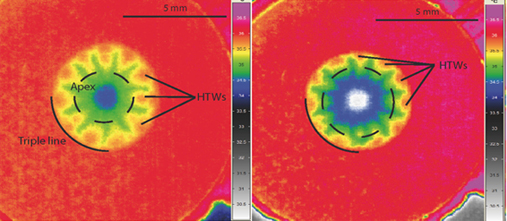
Infrared visualization of ethanol drops under normal gravity [Ts = 35 deg C, P = 1013.25 mbar, R = 2.81 mm] (left) and reduced gravity [Ts = 35 deg C, P = 835 mbar, R = 2.77 mm] (right) [F. Carle, B. Sobac, D. Brutin, Hydrothermal waves in ethanol droplets evaporating under terrestrial and reduced gravity levels, submitted to J. Fluid. Mech., 2012]

In-orbit test and performance of the active-pumped two-phase loops for the AMS-02 tracker thermal control
Zhenhui HE
Professor, Ph. D., Director of Center for Space Technology
School of Physics and Engineering
Sun Yat-sen University
135 XinGanXi Road, Guangzhou, P.R. CHINA
Tel: +86-20-84113398 Fax:+86-20-84113398
E-mail: stshzh@mail.sysu.edu.cn
School of Physics and Engineering
Sun Yat-sen University
135 XinGanXi Road, Guangzhou, P.R. CHINA
Tel: +86-20-84113398 Fax:+86-20-84113398
E-mail: stshzh@mail.sysu.edu.cn
Professor Zhenhui HE graduated from Sun Yat-sen University (SYSU) and received his B. Sc. degree in Physics in 1985. He received his Ph. D. degree from the University of Science and Technology of China in 1990. He worked on high Tc superconductors as a postdoctoral fellow in Sun Yat-sen University from 1991 to 1993; as a visiting postdoctoral fellow in Texas Center for Superconductivity at the University of Houston (USA) from 1993 to 1994; and as a Humboldt fellow in Institut fuer Physikalische Hochtechnologie (Germany) from 1998 to 1990. He started working on two-phase thermal control system since 2004, when he joined the AMS-II program, being responsible of developing a tracker thermal control system (TTCS) in cooperation with MIT, NLR, and INFN. He is now the director of Center for Space Technology, focusing on the two-phase thermal control system.

Equiped with the active-pumped two-phase loops for the Tracker thermal control, the AMS-02 is working on the International Space Station
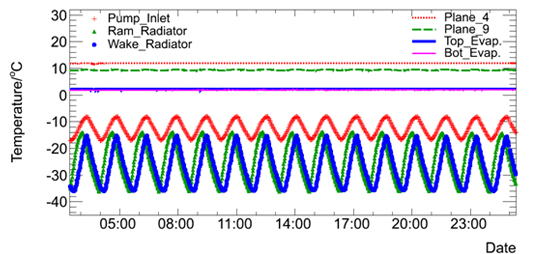
TTCS’s smooth temperature control in the day of October 7th, 2012, with the pump speed of 5000RPM and the saturation temperature of 0șC

Technical Development on Temperature Measurement of Heated Surface and Observation of Gas-liquid Behavior for Boiling Research
Osamu Kawanami
Dr. Eng., Associate Professor
Department of Mechanical and System Engineering,
University of Hyogo
2167 Shosha, Himeji, 671-2280 Hyogo, Japan
E-mail: kawanami@eng.u-hyogo.ac.jp
Department of Mechanical and System Engineering,
University of Hyogo
2167 Shosha, Himeji, 671-2280 Hyogo, Japan
E-mail: kawanami@eng.u-hyogo.ac.jp
Dr. Osamu Kawanami is currently Associate Professor of Mechanical and System Engineering at University of Hyogo, Japan. He obtained his Ph.D. degree from Osaka Prefecture University in 2004. He was Assistant Professor at University of Hyogo (2004-2011). He was ever a Humboldt Fellow in 2010 and spend one year at TU Darmstadt in Germany to conduct the joint research with Prof. Peter Stephan. He is a recipient of Young Investigator Award of the Japan Society of Microgravity Application (2003), Best Poster Award of ITT Workshop (2008). His research interests include boiling heat transfer in mini- and micro-channel, effects of gravity and wettability on boiling. He also interests synthesis of TiO2 nanomaterial with surface modification and its various applications such as paint with high-resistance for deteriorating by UV. He is now co-researcher of TPF program produced by JAXA.
Figs

Fig.1 The test section consisting of transparent heated tube for ISS experiment “TPF” program. The tube can be achieved simultaneous measurement of temperature on heating surface and flow behavior observation.
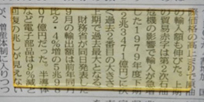
Fig.2 New device to measure the temperature distribution on the heating surface. It has good transparency and enough measurement accuracy for boiling research.

Vibration influence on two-phase systems on Earth and in microgravity conditions
Tatyana Lyubimova
Institute of Continuous Media Mechanics UB RAS
Computational Fluid Dynamics Laboratory
1, Koroleva Str., 614013, Perm, Russia
E-mail: lubimova@psu.ru
Computational Fluid Dynamics Laboratory
1, Koroleva Str., 614013, Perm, Russia
E-mail: lubimova@psu.ru
Professor Tatyana Lyubimova. She was graduated from Perm State University and obtained her PhD degree from Tomsk State University and Doctor of Science degree from Perm State University. She belongs to well-known Perm Hydrodynamical School. Now she is a Head of Computational Fluid Dynamics Laboratory at the Institute of Continuous Media Mechanics Ural Branch of Russian Academy of Sciences and Professor at the Theoretical Physics Department of Perm State University. She works in the field of Microgravity Fluid Dynamics since 1987. Her main research directions are hydrodynamic stability, multiphase flows and vibrational fluid dynamics. She is co-author of the book “Dynamics of Fluid Interfaces in Vibrational Field”. published in 2003 by PhysMathLit., Moscow. She participated in space experiments on Fluid and Material Sciences on European Sounding Rockets, Russian capsule Foton and International Space Station (IVIDIL, DCMIX). She was Vice-Chaiman of the First International Symposium on Hydromechanics and Heat/Mass Transfer in Microgravity, Perm-Moscow, 1991.

Critical point as a tool to study boiling mechanisms
Vadim Nikolayev
CEA-ESEME,
ESPCI-PMMH,
10, rue Vauquelin
75231 Paris Cedex 05, France
Tel: +33 1 40 79 58 26, Fax: +33 1 40 7945 23
E-mail: vadim.nikolayev@espci.fr
ESPCI-PMMH,
10, rue Vauquelin
75231 Paris Cedex 05, France
Tel: +33 1 40 79 58 26, Fax: +33 1 40 7945 23
E-mail: vadim.nikolayev@espci.fr
Dr. Vadim Nikolayev graduated from Kiev state University (Ukraine, ex-USSR at the time) in 1985 and received his Ph.D. degree in Physics in 1989. He was a staff researcher at the Bogoliubov Institute for Theoretical Physics in Kiev in 1988-1999. He took visiting positions in France (CEA/Saclay, 1995-1996, CEA/Grenoble 1997-1998 and in the USA, University of New Orleans, 1998-1999). Since 1999 he works as a staff researcher at the Commission of Atomic Energy (CEA) of France in the Service of low temperatures (SBT). He is at present a member of the Team of supercritical fluids for environment, materials and space (ESEME) created jointly by CEA, CNRS and ESPCI. He is based at ESPCI in Paris, in the Laboratory of physics and mechanics of heterogeneous media (PMMH). His scientific interests include various aspects of boiling theory at high heat fluxes and at microscale (in particular, dynamics of contact lines in presence of the heat transfer), experiments in low gravity, heat transfer in near critical fluids, theoretical and numerical modeling of pulsating heat pipes, modeling of contact line dynamics on heterogeneous substrates etc. He leads a group that works on these subjects under academic and industrial contracts.

Some aspects of the physics of superhydrophobicity
Romain RIOBOO
UNIVERSITY OF MONS
Laboratoire de Physique des Surfaces et des Interfaces
Bâtiment 4
19, Avenue Victor Maistriau
7000 - MONS, BELGIUM
E-mail: romain.rioboo@umons.ac.be
Tel: +32(0)65.37.38.85
Fax: +32(0)65.37.38.81
Laboratoire de Physique des Surfaces et des Interfaces
Bâtiment 4
19, Avenue Victor Maistriau
7000 - MONS, BELGIUM
E-mail: romain.rioboo@umons.ac.be
Tel: +32(0)65.37.38.85
Fax: +32(0)65.37.38.81
Dr Romain Rioboo is researcher at the university of Mons (Belgium). He graduated his PhD in University of Paris 6 (UPMC) in 2001 while most of his research was performed in
Germany under Prof. Tropea supervision.
After studying the effect of roughness and wettability on drop impact on dry substrate he went to Belgium and integrated the team of Prof. De Coninck. He studies since then the wettability and its application in various domains focusing on drop impact, phase change and superhydrophobicity.
Since 15 years superhydrophobic surfaces and extreme repellency of solid surfaces has gained considerable attention from the scientific community. Because of its great technological potential the phenomenon is strongly studied and methods to produce artificial superhydrophobic surfaces are now numerous. First we will summarize the domain and its potential applications, its challenges, some knowledge on this field and key basic questions still to be answered. The second part of the talk will present various results that providing hints toward a general knowledge of the phenomenon. Finally we will show the still large perspective of this fascinating subject.
Germany under Prof. Tropea supervision.
After studying the effect of roughness and wettability on drop impact on dry substrate he went to Belgium and integrated the team of Prof. De Coninck. He studies since then the wettability and its application in various domains focusing on drop impact, phase change and superhydrophobicity.
Since 15 years superhydrophobic surfaces and extreme repellency of solid surfaces has gained considerable attention from the scientific community. Because of its great technological potential the phenomenon is strongly studied and methods to produce artificial superhydrophobic surfaces are now numerous. First we will summarize the domain and its potential applications, its challenges, some knowledge on this field and key basic questions still to be answered. The second part of the talk will present various results that providing hints toward a general knowledge of the phenomenon. Finally we will show the still large perspective of this fascinating subject.

Chemical Aspects of Nanofluids for Heat Transfer Enhancements
Masahide Sato
Department of Advanced Interdisciplinary Sciences, Utsunomiya University,
7-1-2 Yoto, Utsunomiya, 321-8585, JAPAN
7-1-2 Yoto, Utsunomiya, 321-8585, JAPAN
E-mail: masa@chem.utsunomiya-u.ac.jp
Dr. Masahide Sato is an associate professor of Utsunomiya University, Japan. He got degree of Dr. Eng. from Department of Chemical Engineering, Tohoku University, Japan in 1994. He ever worked as a research associate in Institute for Chemical Reaction Sciences, Tohoku University (1994-1997) and as a visiting researcher in University of Naples, Federico II (2008). His research interests include synthesis of inorganic nanomaterial including nanoparticles, nanoplates, nanowires and nanosheets and these applications as nanofluid for heat transfer working fluids, surface wetting control by using ultra-thin organic films such as silane coupling agents and alkylthiols, and these applications as vapors cooling or boiling heat transfer surface for improvement of performances of thermal management devices for ground and space application. He has published more than 50 international journal papers.
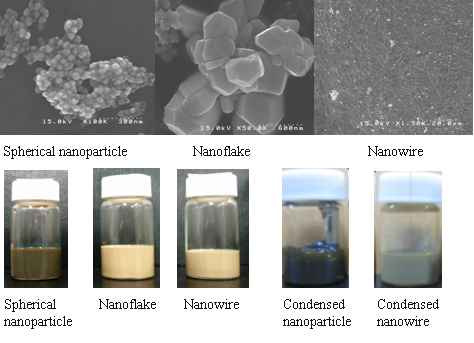
SEM images and outlooks of silver nanomaterial and nanofluid prepared by microwave- polyol method.

Advanced Cooling Technology for Next Generation Power Electronics
Koichi Suzuki
Tokyo University of Science, Yamaguchi
Department of Mechanical Engineering
1-1-1 Daigaku-Dori, Sanyho-Onoda, Yamaguchi 756-0884, Japan
E-mail: suzuki@rs.noda.tus.ac.jp
Department of Mechanical Engineering
1-1-1 Daigaku-Dori, Sanyho-Onoda, Yamaguchi 756-0884, Japan
E-mail: suzuki@rs.noda.tus.ac.jp
Koichi Suzuki is a professor of Dept. Mechanical Engineering in Tokyo University of Science, Yamaguchi. He graduated from department of applied physics of Tokyo University of Science (TUS) in 1967. Since then, he engaged in research on combustion science and technology concerned with turbulent flames of gaseous fuels as a research associate in department of mechanical engineering of TUS. He obtained degree of Dr. Eng. from TUS. in 1987 and started study on boiling heat transfer including reduced gravity experiments. He has developed the research of Microbubble Emission Boiling (MEB) to advanced cooling technology for future power electronics. He was invited for lectures on MEB and Boiling Heat Transfer under microgravity condition at several universities in Russia, China and Korea. They are MPEI, SJTUS, Tsinghua Univ., South China Univ. Tech., Xinjian Univ. for example. He moved to TUS Yamaguchi that was one of the group universities of TUS. in 2010. In 2011, he was elected to a Fellow of JSME.
Recently, an electric vehicle has been developed positively in the industrially advanced countries for the reduction of Carbon Dioxide. A compact electronic inverter is essential to control high electric power in the electric vehicle. Where, SiC that is expected the power semiconductor of the next generation will be used for the power IC devices instead of the conventional IGBT in near future. It is predicted that the maximum thermal emission rate issued from the IC component is 300 to 500W/cm2. It is very difficult to remove such high heat generation from the IC components by the conventional cooling technology using single-phase fluid. New cooling technology must be in practice as soon as possible.
In the present lecture, some experimental researches on high heat flux heat transfer and the applications to cooling technology are introduced for the next generation power electronics. They are microbubble emission boiling (Fig.1), heat transfer with phase-change in porous materials (Fig.2) and heat transfer of self-rewetting liquids for example. Furthermore, the cooling technology is expectedly useful for a high heat flux transport system in space facility, a fuel cell compact power source and a cooling and co-generation system of server station.
In the present lecture, some experimental researches on high heat flux heat transfer and the applications to cooling technology are introduced for the next generation power electronics. They are microbubble emission boiling (Fig.1), heat transfer with phase-change in porous materials (Fig.2) and heat transfer of self-rewetting liquids for example. Furthermore, the cooling technology is expectedly useful for a high heat flux transport system in space facility, a fuel cell compact power source and a cooling and co-generation system of server station.
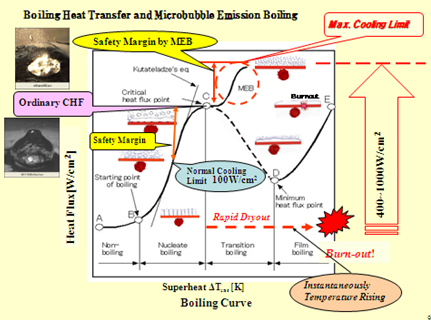
Fig.1 Boiling curve with microbubble emission boiling
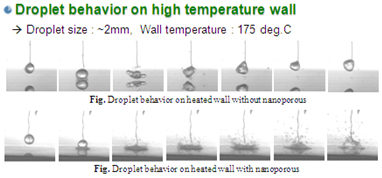
Fig.2 Droplet behavior on heated wall with nano-porous layer

Enhanced Heat Transfer of Flow Boiling Combined with Jet Impingement
Jin-Jia WEI, Jian-Fu ZHAO
Jin-Jia WEI, State Key Laboratory of Multiphase Flow in Power Engineering, School of Energy and Power Engineering, Xi’an Jiaotong University. Xianning West Road 28, Xi’an 710049, CHINA
Jian-Fu ZHAO, Key Laboratory of Microgravity (National Microgravity Laboratory)/CAS, Institute of Mechanics, Chinese Academy of Sciences (CAS). 15 Beisihuanxi Road, Beijing, 100190, China
E-mail: jjwei@mail.xjtu.edu.cn
E-mail: jjwei@mail.xjtu.edu.cn
Dr. Jin-Jia WEI is a chair professor of “Tengfei Talent Plan” in Xi’an Jiaotong University. He is also a council member of China Energy Society and editorial member of several international journals. He got degree of Dr. Eng. from Xi’an Jiaotogn University in 1998 and PhD degree from Kyushu University in 2002. He ever worked as a special researcher in National Institute of Advanced Industrial Science and Technology of Japan (2002-2005) and as a guest professor in Tokyo University of Science (2007). His research interests include enhancement of boiling heat transfer for ground and space application, numerical methods in fluid flow and heat transfer, two-phase/drag-reducing flow and heat transfer, and utilization of solar thermal energy. He has published more than 50 international journal papers, and got an Excellent Young Scholar Award of WU Zhong-Hua Fund in 2010 from Chinese Society of Engineering Thermophysics.
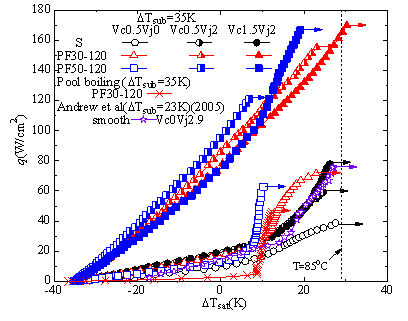
Boiling curves for different combinations of jet and cross flow velocities.

Recent Capillary Fluidics Research Relevant to Spacecraft System Design
Mark Weislogel
Professor, Mechanical and Materials Engineering, Portland State University
1930 SW 4th Avenue, Portland, Oregon, 97201, USA
E-mail: mmw@cecs.pdx.edu
1930 SW 4th Avenue, Portland, Oregon, 97201, USA
E-mail: mmw@cecs.pdx.edu
Mark Weislogel (Ph.D. M.E., Northwestern, 1996) has conducted fundamental and applied thermal/fluids research, systems analyses, and engineering research and development since 1986. He has 10 years aerospace experience working with NASA, specializing in microgravity capillary flows and phenomena leading to numerous drop tower tests, low-g aircraft campaigns, and space flight experiments aboard the Space Shuttle, Russian Mir Space Station, and the International Space Station. He has over 4 years experience in industry designing lightweight carbon structures, passive cooling cycles, and large length scale capillary systems. Weislogel is currently a professor at Portland State University since 2001 and his research interests continue to focus on macroscale and microscale capillary-driven flows in complex geometries, passive cooling systems, microscale thermal devices, and microgravity fluid mechanics. Weislogel has over 70 publications and four patents. His teaching emphasis centers on the thermal/fluids sciences.

Research on Vapor Compression Heat Pumps for Space Application
Yu-Ting WU, Chong-Fang MA, Hang GUO
Yu-Ting WU,College of Environmental and Energy Engineering, Beijing University of Technology. Beijing 100124, China
Tel: +86-10-67391985 ext. 8323 Fax: +86-10-67392774
E-mail: wuyuting@bjut.edu.cn
Tel: +86-10-67391985 ext. 8323 Fax: +86-10-67392774
E-mail: wuyuting@bjut.edu.cn
Dr. Yu-Ting WU is a professor of Beijing University of Technology and the head of thermal fluid group in MOE Key Laboratory of Enhanced Heat Transfer and Energy Conservation and Beijing Municipal Key Laboratory of Heat Transfer and Energy Conversion. He got his Ph. D. degree from Beihang University in 2000. He ever worked as postdoctoral researcher in Tsinghua University (2001-2002). His research interests include heat pump for ground and space application, high temperature heat transfer and storage with molten salts, solar and geothermal energy, single screw expander and compressor. He has published more than 100 papers.

Miniature Single Screw Compressor

Gas-liquid flow pattern modulation by the phase separation concept for vertical upflows
Jin-Liang XU*, Hong-Xia CHEN, Zi-Jing LI, Jian XIE, Feng XIN, Wei WANG
School of Renewable Energy School, North China Electric Power University, 102206, Beijing, China
*E-mail: xjl@ncepu.edu.cn, tel/fax: 86-10-61772268
*E-mail: xjl@ncepu.edu.cn, tel/fax: 86-10-61772268
Dr. Jin-Liang XU is the Dean of the Renewable Energy School of North China Electric Power University. He got Ph. D. in 1995 at Xian Jiaotong University, and was a postdoctor in Tsinghua University from 1995 to 1997. Then he worked in Florida International University and University of Notre Dame in the period of 1997-2002. He joined Guangzhou Institute of Energy Conversion from 2002, and setup the Micro Energy System Laboratory there. He joined North China Electric Power University at 2009 and founded the Beijing Key Laboratory of Multiphase Flow and Heat Transfer for Low Grade Energy Utilizations. His research interest is multiphase flow and heat transfer in micro systems, energy saving systems and nuclear power systems. He has more than 70 papers published in recognized journals, which were cited by more than 600 times. He was the associate editor for the Alternative Energy journal, severed as the track-chair or session chair and presented the keynote lectures in a set of international conferences. He was the reviewer for 20 journals.
Condensers are widely used in various thermal and power systems for ground and space applications. The key issue in a conventional condenser is the thick liquid thickness near the tube wall with the condensation development along the flow direction, causing a large thermal resistance to decrease the heat transfer coefficient.
We proposed a fresh idea to solve the above issue. Technically, a cylinder made of a single layer of mesh pore surface is suspended in the condenser tube, forming an annular region and an inner region. The mesh pore surface has two functions: (1) to prevent gas bubbles entering the inner region, (2) to suck liquid towards the inner region. Thus the gas and liquid phases are separated with gas flowing in the annular region and liquid flowing in the inner region. The condensation heat transfer should be significantly enhanced because the inner tube wall directly contacted with the gas phase. An air-water two-phase flow experiment has been performed to verify the above idea. It’s observed that the ring slug bubble moving upwards in the annular region, while the inner region is full of liquid without any gas. For all the cases, the bubbles are flowing upwards in the annular region, with inner region full of liquid without gas. The flow pattern modulation concept can be extended in micro gravity environment.
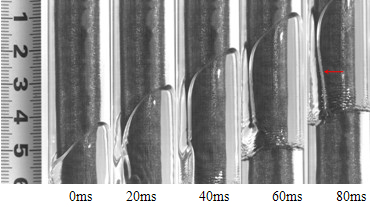
Figure 1 A ring slug bubble is moving upwards in the annular region, the inner region is full of liquid without any gas (Jl=0.057m/s, Jg=0.029 m/s)
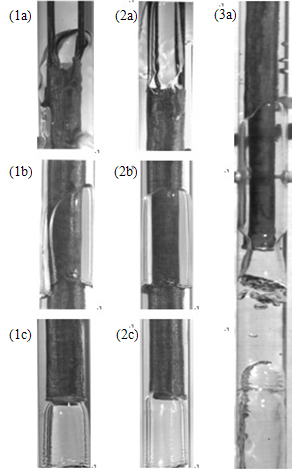
Figure 2 Bubbles in the outlet, medium and entrance regions for different conditions, (1) Jl=0.057m/s, Jg=0.029 m/s; (2) Jl=0.115m/s, Jg=0.046 m/s; (3) Jl=0.115m/s, Jg=0.143 m/s (a) outlet region (b) medium region (c) entrance region
HEAT TRANSFER International Research LABORATORY
Kutateladze Institute of Thermophysics SB RAS
1, Lavrentiev avenue,
630090, Novosibirsk, Russia
Kutateladze Institute of Thermophysics SB RAS
1, Lavrentiev avenue,
630090, Novosibirsk, Russia
Copyright © 2011-2012












